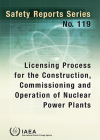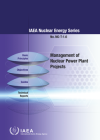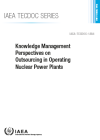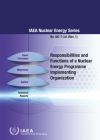Construction and commissioning are the activities by which a nuclear power plant is built or modified and its systems, structures and components put into operation. The IAEA’s safety standards, technical reports and review services assist Member States perform these activities and achieve a high level of safety and performance.
Construction and commissioning of nuclear power plants
The construction phase of a new nuclear power plant is vital to the safe operation of the facility through its design life. The most successful projects are those that have been carefully planned; have rigorous processes that ensure that the plant design, materials and personnel are ready before starting construction; that implement these policies, procedures and safety culture at the site; that ensure coordination between organizations such as the regulator, the licensee, the vendors and subcontractors; and that utilize the most effective construction methods that are available.
Commissioning covers a wide range of activities leading to putting into service a new nuclear facility or a new system, structure or component within an existing facility. During commissioning the structures, systems and components are verified to comply with the design, made operational and tested to confirm they meet the expected performance criteria.
Commissioning activities should be planned early in the design and procurement process and carefully consider acceptance criteria and test methods, including those for tests performed in vendor factories. Commissioning personnel play an important role in linking the construction and operating phases of a project. Planning human resource development for commissioning staff is an important aspect of a country’s nuclear power programme.
Helping Member States with good project management practices
Safety and quality requirements for nuclear power plants are continuously evolving, while the costs for equipment and labour to construct such facilities are steadily increasing. As a result, constructing and commissioning such a facility has become considerably more capital intensive, requires high technology investments and involves complex systems and interfaces.
Aside from the technical and financial aspects, licensing requirements, public and stakeholder involvement, as well as proper project management are the main challenges. Another is the need for contractor organizations to maintain a qualified workforce. Competent project management must bring to bear more efficient work sequences, thereby reducing overall costs and increasing productivity, and also work toward reducing the accumulated financial obligations during the construction process.
The IAEA helps its Member States introduce good project management practices drawn from international experience. It develops guidance on best practices, facilitates learning and development and provides a platform for Member States to share experience with the tools and processes that support the construction, commissioning and modification of nuclear facilities. IAEA Safety Standards, the Nuclear Energy Series and other IAEA publications serve as guides for these activities.
The Agency also provides construction review services based on IAEA Standards and guidance and international good project management practices to help operating organizations achieve and maintain the highest levels of safety and efficiency. To support regulatory bodies, it offers technical advisory and safety review services to enhance their capacity for an independent, effective regulatory supervision of nuclear power plant safety.








